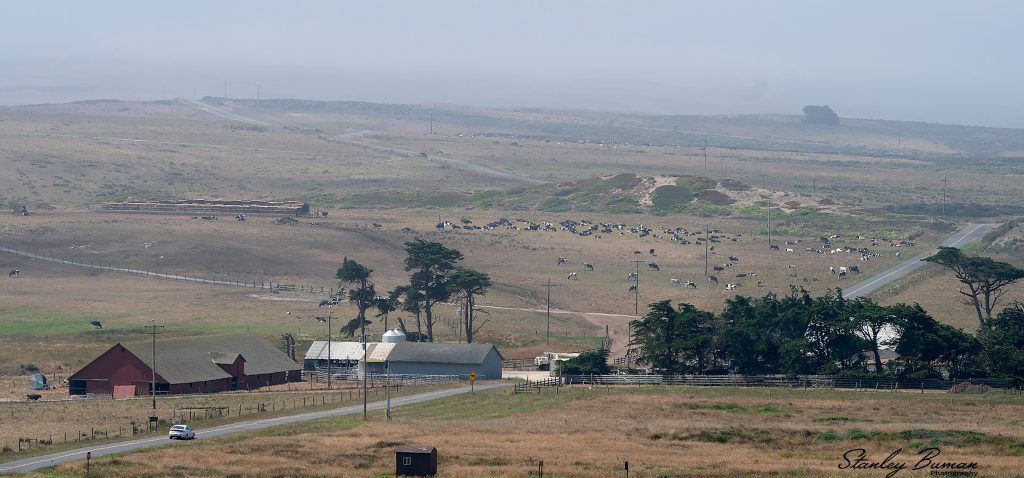When you think of mammals in a national park, what comes to mind? For me, it is the larger mammals such as bears, elk, moose, caribou, etc. Dairy cows are nowhere on my list. But dairy cows are prevalent at Point Reyes.
Generally speaking, hunting, mining, and consumptive activities are not authorized on national park land. Yes, dairy and beef operations are considered consumptive activities. So, what gives here?
Point Reyes is NOT a national park. It is a National Seashore. While it is managed by the National Park Service, different rules apply.
I must admit that when I first crossed the Inverness Ridge within Point Reyes National Seashore, and the landscape transitioned from a heavily wooded area to a pastoral zone, I smiled. I literally drove thru 3 grass-fed dairy operations on the way to my apartment!

The early settlers of the 1850s thought that the cool, moist climate of Point Reyes would provide near-ideal conditions for raising dairy cows. Grass was in abundance because Native Americans burned the grasslands, which controlled tree and brush encroachment. The mild summer and winter temperatures were conducive to raising livestock. And, fresh water was abundant.

Point Reyes National Seashore was established in 1962 by President John F. Kennedy. Ranchers and environmentalists actually banded together to stop the encroachment of subdivisions on Point Reyes. As part of the deal, the ranchers insist they were made a promise specifically designed to endure; they could remain as long their families were willing to work the land. So, the ranchers sold their land to the government and leased it back.
Currently, 24 ranching operations totaling approximately 18,000 acres are authorized for beef and dairy ranching under lease/permits. Ranchers pay an adjusted fair market value rent to the National Park Service that takes into account the regulations required to operate within the Seashore boundaries. They must follow prescribed practices that protect the wildlife and ecosystems within the pastoral zone.
Today, some environmentalist are not on the same page as the ranchers. While they are pleased that the seashore is not full of subdivisions, they question the impact that livestock has on the land and water resources of the national seashore.
To me, ranching is part of the charm of this area. Occasionally, my daily commute is blocked by a herd of dairy cows crossing the road from the milking barn to a pasture. I just smile and think about the commuters in nearby San Francisco who are stuck in traffic jams. I much prefer a cow-jam. I can listen to cows mooing instead of horns honking. I am thankful I live in rural America.

Is there room for improvement in the ranch operations? Sure there is. But bureaucracy plays a role in their management decisions. Getting rid of the cattle may solve some environmental issues but could also have negative impacts on vegetation and the animal species that inhabit the grasslands.

